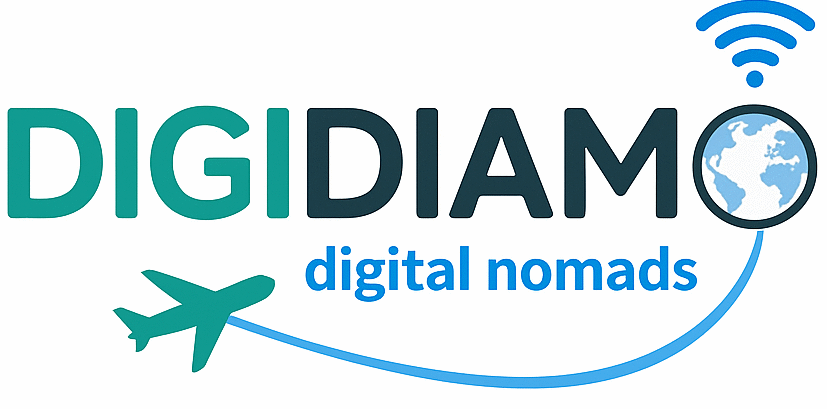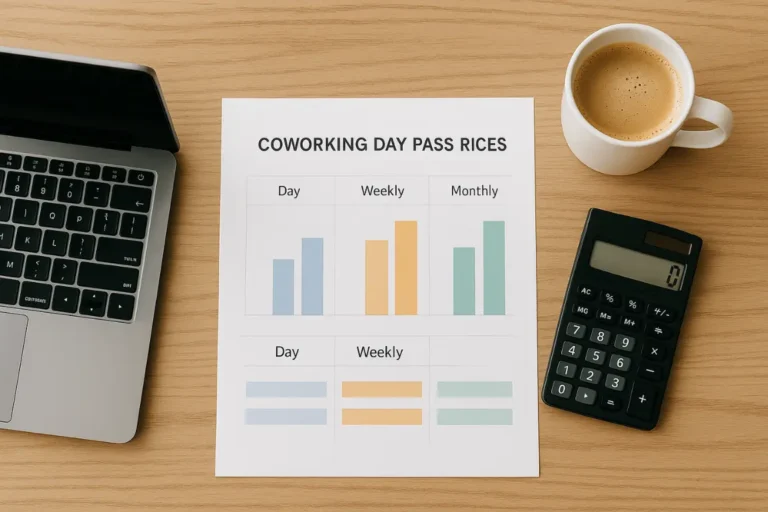Fast Wifi coworking: tested speeds & backup power
Introduction
Good internet is not a perk. It is the bridge between your work and your clients. Many spaces promise speed yet fade at 16:00 when every desk streams and syncs. This guide shows simple tests, clear targets, and small choices that keep calls clean and files moving. For the bigger map of pricing, hours, and neighborhoods, start with best coworking spaces for digital nomads.
Why speed claims are not enough
A banner that says fast wifi means little without proof. Peak hours crush weak setups. Routers hide in metal cabinets. Backup power covers lamps but not the network. Confidence comes from repeat tests, a quick tour, and a plan for storm days.

The numbers that matter
- Download: 50 Mbps for solo work. 100+ on heavy days
- Upload: 15 Mbps for clean video. 30+ for screen shares
- Latency: under 40 ms to a nearby hub
- Jitter: under 20 ms so voices do not wobble
If a space sits far below these floors at peak, treat it like a café, not a base.
Simple tests you can run
- Open a speed test. Note download, upload, latency, jitter
- Start a short call with a friend. Upload a small file at the same time. Run a second test during the call
- Repeat at lunch and again at 16:00
- If ethernet exists, plug in and repeat
For price context and trial tactics, use coworking day pass prices.
Read the room without a network map
Your eyes beat any brochure. Look for routers on open shelves, not inside metal boxes. Line of sight helps even on 5 GHz bands. Thick stone walls and mirrored glass kill signal. A ceiling packed with metal ducts bounces waves. If staff can show the closet, ask what stays powered during cuts. UPS bricks near routers are a green flag.
Backup power is half the battle
Speed means nothing if the router dies. Ask two things. Do you keep the network on a UPS during short cuts. Do you run a generator that powers key zones for hours. If both are yes you can relax. If not, keep a second base for storm days and late uploads. For night access tradeoffs, see 24/7 coworking spaces.
Wired beats wireless on launch days
Wifi is fine for email and light browsing. For demos and training calls pick a cable. Bring a small usb c to ethernet adapter and a flat cord. Many floors hide a few wired seats near focus rows. Ask reception and book them early. If calls drive your week, match this with coworking with phone booths for predictable rooms.
Timing as a strategy
Internet speed follows human habits. Lunch dips as videos play. Late afternoon surges as teams push commits. Mornings are calm. Schedule heavy sends before ten and after six. Put key calls late morning or just before lunch. If a building hosts events, avoid those hours for promises you cannot move.
When the problem is your laptop
A bad line is not always the space. Common culprits:
- too many tabs and a leaky browser
- a vpn that routes traffic far away
- sync or backup apps chewing bandwidth during a call
- old wifi drivers
- a laptop that overheats and throttles
Close heavy apps. Pause sync during calls. Update drivers when you land. Lift the laptop on a small stand to keep it cool.
A tiny kit that fixes big headaches
- usb c to ethernet adapter and a two meter flat cable
- compact multi port charger
- long usb c cable
- over ear headset with a clean mic
- foldable laptop stand
- microfiber cloth for the camera lens
City snapshots
Lisbon
Central districts post strong numbers. Download near 200 and upload above 50 on good floors. Backup power varies by building age. Ask about generators. Sit one row in from windows on humid days.
Canggu (Bali)
Storms push crowds inside. The best operators run generators and keep routers on UPS. Wired seats shine during rain. Rooms with firm AC help on video days.
Mexico City
A fair baseline is 100 down and 30 up in Roma and Condesa. Some buildings pride themselves on backup power. Pick rooms with real ventilation for long sessions.
Medellín
Interior rows beat glass terraces for calls. 150 down and 40 up are common in good spaces. Many floors keep a guard and a generator which makes evening work calmer.
Chiang Mai
Nimman likes remote workers. Even cafés post decent speeds. Aim for steady uploads above 25 and find a wired row for launch days. Filtration helps in smoky season.
Tbilisi
Fiber is strong in newer builds. Winter dips happen. Generators win the season. Stone walls look great and block wifi, so walk the floor before you settle.
Five-minute desk test
- speed test now and during a short call
- walk ten steps and test again
- note socket reach and chair comfort
- ask about ethernet and backup power
- book a wired seat for demo days
Tour questions that get real answers
- which zones stay powered during an outage
- where are the routers
- how many devices connect at peak
- what happens if the network fails mid day
- can I reserve a wired seat
Daily flow that keeps uploads smooth
- morning uploads and big sync
- midday calls with sync paused
- late afternoon design or offline work
- evening file push and light admin
What 2025 adds
More operators show live status pages with bandwidth and incident logs. That level of honesty is rare and useful. Battery systems sit beside generators to smooth quick cuts. Night access grows yet some buildings cap AC after midnight. Ask about that if you work late. Floor plans now mark wired rows. Take them when your week is call heavy.
Budget and payment notes
Fast wifi coworking often costs a little more. Pay for reliability when your work depends on it. Test with a day pass. If it hits the mark, upgrade to weekly. If a higher tier bundles wired seats and room credits, weigh that against your call load. Pay in local currency and decline dynamic conversion. Use a small virtual card for trials so renewals do not surprise you. For walkable bases and backup options, explore coworking near nimman and other top neighborhoods.
FAQ
What internet speed do I need for video calls
Aim for 15 Mbps upload and latency under 40 ms. For screen shares and demos, 30 Mbps upload gives breathing room.
How do I test a space fast
Run a speed test, call a friend while uploading a small file, and repeat at 16:00. If ethernet exists, plug in. If results fall hard at peak, keep searching.
Do I need a generator
You need a network that stays alive. A UPS on routers covers short cuts. A generator covers long ones. Ask for both.
Can I get stable wifi in cafés
Sometimes yes. For client calls and launches, choose a wired seat in coworking. Mix cafés for light work to save money.
Conclusion
Fast wifi coworking is the difference between a calm week and a string of apologies. Test more than once. Sit where the signal is clean. Prefer ethernet on key days. Pick spaces that back their promise with batteries and generators. If your next step is booking private rooms for clean audio, head to Coworking with Phone Booths & Meeting Rooms.






